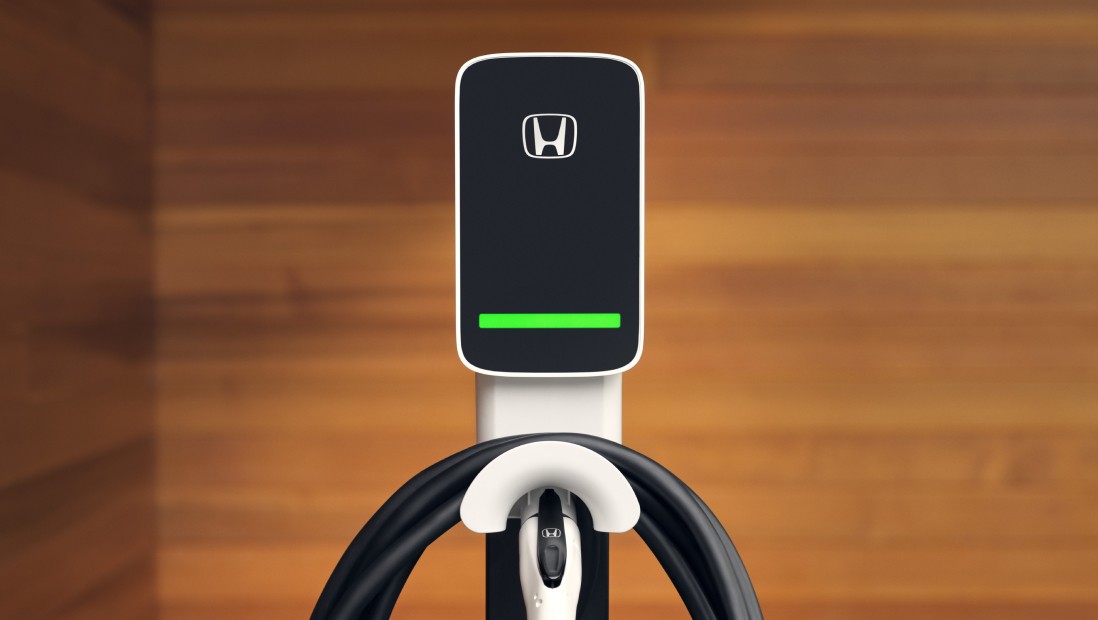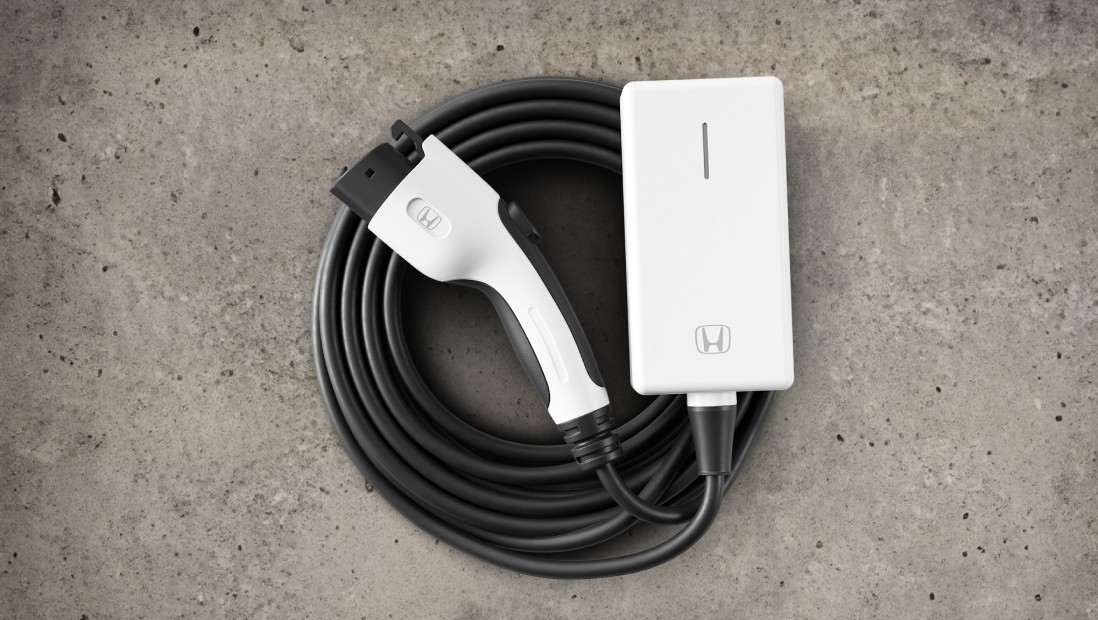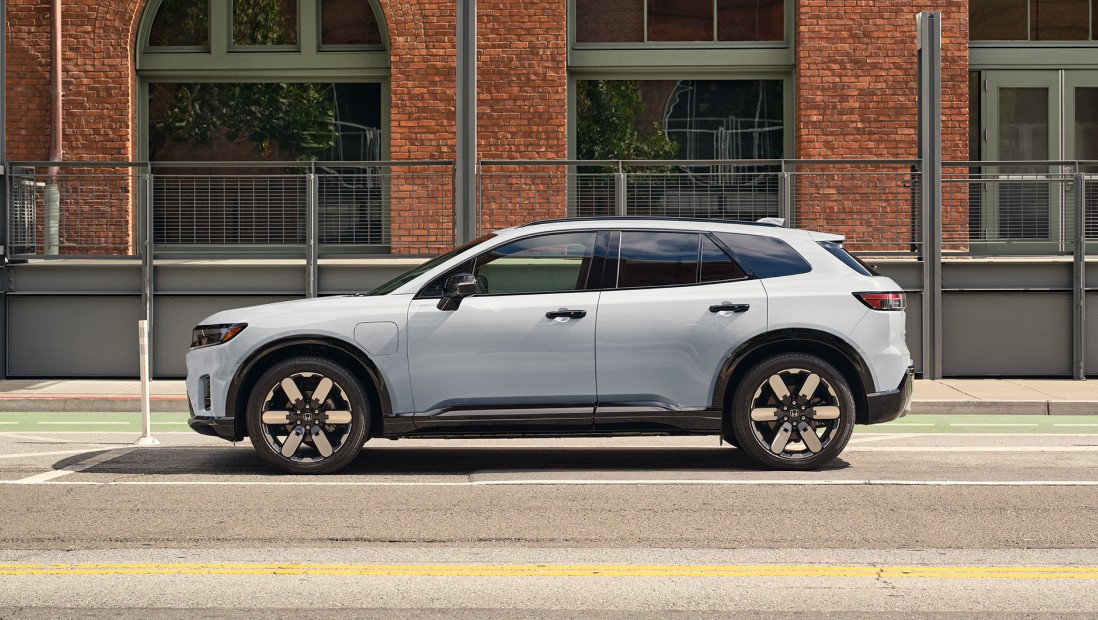Ride with Right Honda
into an electric future
Trust us to keep you connected to the world of EVs. Here you can find our current and future lineup of EVs, as well as answers to general EV questions and personalized resources to explore. Whether you're ready to jump into an EV or just thinking about it, we're here to help.
What you need to know about Honda EVs
-
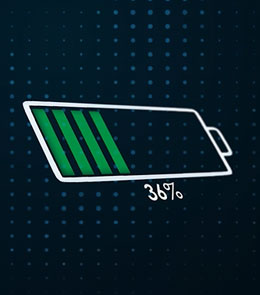
Charging Your Honda EV
Before jumping into the driver's seat of an EV, let's review some of the charging basics.
-
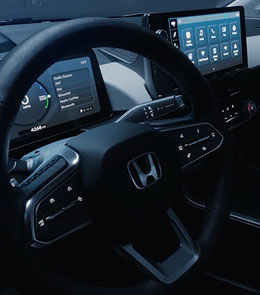
Benefits of a Honda EV Over Gas Power
A sporty ride with instant torque and zero emissions. Learn more about the benefits of Evs.
-
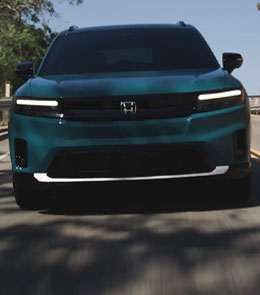
The Honda Ownership Experience
Feel confident that you're asking the right questions and selecting the right EV for you.
-

EV Myths Busted
Will lack of battery range cause you to be stranded on the road? We bust this myth and other EV rumors.
Thinking of every mile? Start mapping out your trip.
Tax Incentives & Benefits
Discover which electric car incentives, tax credits and other benefits you qualify for.
Please enter a valid zip code.
Zip code: {{ filterBar.postcode }}
Model: {{ filterBarModelDisplayName }}
No incentives found.
Please try another zip code or model.
Please be aware you must apply directly with the organization referenced and confirm eligibility and amount directly with that organization. Funding amounts estimated here are estimates only and are not guaranteed.
Please enter a valid zip code.
Personalize your results
Please enter a valid zip code.
•This calculator makes assumptions about credit score, vehicle driving history, financing, purchase price, and more. Results are intended to be rough estimates. See your local dealership for a more accurate estimate for your situation.
Estimated EV savings over 5 years:
{{ evTotalSavings }}
Total savings *
{{ vehicle.model_year }} {{ vehicle.make }}
{{ vehicle.model }} {{ vehicle.trim }}
Comparable Gas
Model
• This calculator makes assumptions about credit score, vehicle driving history, financing, purchase price, and more.
Results are intended to be rough estimates. See your local dealership for a more accurate estimate for your situation.
Please enter a valid zip code.
Estimated carbon emissions savings over 5 years:
{{ co2Reduction }}%
Reduction *
{{ vehicle.model_year }} {{ vehicle.make }}
{{ vehicle.model }}
Comparable Gas Model
EV Charging Solutions
The purchase of your Honda EV includes the choice of one of three charging packages: a home charging station, a portable charging kit, or public charging credits.
Home Electrification
Prepare your home for a sustainable future with our network of verified local installers.
Common EV Questions
-
Answer: Honda Home Electrification is an online marketplace designed to provide clients with an easy and seamless home charging solution. Honda Home Electrification connects Honda owners with a network of pre-vetted local installers through the support of dedicated Expert Energy Advisors, who will help you select the home charging solution that best fits your needs. More information on how to order and install Honda home energy solutions is available at Honda Home Electrification: homeelectric.honda.com
For those looking to charge on the go, Honda owners can use the Honda App to easily find and connect to charging stations nationwide with access to more than 90-percent of the existing DC Fast Charge networks. Convenient payment integration allows for all payment processing to be conducted in the Honda App at any of the supported charging networks.
Agreements with EVgo and Electrify America, plus roaming network partners, give Honda EV drivers access to the largest charging networks in North America. Honda EVs will adopt the NACS charging standard, gaining access to the Tesla Supercharger network.
Combined with the recent joint venture established with six other major automakers to create a leading high-powered charging network, U.S. Honda EV customers will be able to utilize the majority of public American DC fast chargers starting in 2024 and can anticipate having around 100,000 DC charge points available to them by 2030.
Upon the purchase or lease of a new Honda EV, customers can select one of three charging packages included in the MSRP. Honda offers a combination of public charging credits, charging equipment and installation credit to fit your lifestyle, whether you’re a homeowner or renter, a new EV driver or those trading up for a newer EV.
-
Keep in mind that range depends on many factors, and your range may vary significantly with conditions such as outside temperature, road conditions, highway versus city driving, accessory and climate control use, driving style, vehicle use, vehicle maintenance, lithium-ion battery age and state of health.
The 2024 Honda Prologue EV has an anticipated EPA range rating of 296 miles. The Prologue has an 85.0 kWh Ultium lithium-ion battery.
-
You can charge your electric vehicle at home using a home charger, which can be installed in your garage or driveway. This type of charger is typically slower than public charging stations but is more convenient for overnight charging.
Honda Home Electrification is an online marketplace designed to provide clients with an easy and seamless home charging solution. Honda HE connects Honda owners with a network of pre-vetted local installers through the support of dedicated Expert Energy Advisors, who will help you select the home charging solution that best fits your needs. More information on how you can order and install Honda home energy solutions is available at the Honda Home Electrification marketplace: homeelectric.Honda.com
Plug your charge connector into your EV and charging will start based on your Charge Mode setting. The app will show the charging status, such as current battery state of charge (SOC) and time remaining. You can also stop a charge from the app.
-
Charging a Honda EV at home is convenient and easy, provided that you have access to a dedicated electrical circuit and the appropriate charging equipment. More information on how you can order and install Honda home energy solutions is available at Honda Home Electrification: homeelectric.Honda.com
Here are the general steps to follow to charge your Honda electric vehicle at home:
- Determine your EV's charging requirements: The charging time and equipment you'll need will depend on the size of your EV's battery, the level of charging speed you prefer, and the type of charging connector your EV uses.
- Install a dedicated electrical circuit: Depending on your EV's charging requirements, you may need to have a dedicated 240-volt electrical circuit installed by a licensed electrician. This circuit will provide the necessary power to charge your EV safely and efficiently.
- Purchase a charging station: You will need to purchase a Level 2 charging station that is compatible with your Honda EV. Honda recommends using a Honda-approved charging station such as the Honda Connected Charge Station, to ensure safety and compatibility. You can purchase a charging station from a Honda dealer or at homeelectric.Honda.com.
- Install the charging station: Once you have a dedicated electrical circuit and a charging station, you can install the charging station at your home. The charging station should be installed by a licensed electrician to ensure safety and compliance with local electrical codes.
- Charge your EV: To charge your Honda EV at home, simply plug in the charging cable to your EV and the charging station. The charging station will communicate with your EV to ensure that it is charging safely and efficiently.
-
For those looking to charge on the go, Honda owners can use the Honda App to easily find and connect to charging stations nationwide with access to more than 90-percent of the existing DC Fast Charge networks. Convenient payment integration allows for all payment processing to be conducted in the Honda App at any of the supported charging networks.
Agreements with EVgo and Electrify America, plus roaming network partners, give Honda EV drivers access to the largest charging networks in North America. Honda EVs will adopt the NACS charging standard, gaining access to the Tesla Supercharger network.
Combined with the recent joint venture that Honda established with six other major automakers to create a leading high powered charging network, U.S. Honda EV owners will be able to utilize the majority of public American DC fast chargers starting in 2024 and can anticipate having around 100,000 DC charge points available to them by 2030.
Upon the purchase or lease of a new Honda EV, customers can select one of three charging packages included in the MSRP. Honda offers a combination of public charging credits, charging equipment and installation credit to fit your lifestyle, whether you’re a homeowner or renter, a new EV driver or those trading up for a newer EV.
-
Yes, Honda EVs are able to charge at Tesla Superchargers. Honda has agreements with several of the largest charging networks in the U.S., including Tesla Superchargers, EVgo and Electrify America.
- Gas prices fluctuate and electricity rates vary regionally, but in most cases, it costs less per month to charge an EV than to buy gas for an ICE vehicle. While free options are available, public charging stations have time-based fees that usually cost more than home charging.
- Upon the purchase or lease of a new Honda EV, customers can select one of three charging packages included in the MSRP. Honda offers a combination of public charging credits, charging equipment and installation credit to fit your lifestyle, whether you’re a homeowner or renter, a new EV driver or those trading up for a newer EV.
-
Yes, it’s possible to charge an electric car with solar energy. To charge your EV using solar power at home, you’ll need to install a solar panel array and balance of system with sufficient electricity generation capacity. For more information, visit the Honda Home Electrification website: homeelectric.Honda.com
-
EVs have multiple visual and audio warnings when the battery is running low. Some EVs may also display messages on the navigation screen. If you ignore these alerts, your EV will slow down and eventually stop. Many EVs will go into a low-power mode when the battery is almost depleted.
If your Honda EV runs out of charge while driving, it will stop running and come to a complete stop, just like a gasoline-powered car that runs out of fuel. If your Honda EV does run out of charge while driving, you will need to pull over to a safe location and call for assistance.
-
Depending on where you live, incentives maybe available with the purchase of an electric vehicle. Check the tool above on this page to find out what incentives you qualify for.
Many states offer their own incentives for electric vehicle buyers, such as, tax credits and free parking. The availability and amount of these incentives vary by state, so it's important to check with your local government or utility company to see what incentives are available in your area.
Special electricity rates for electric vehicle owners. For example, some utilities offer lower rates for charging during off-peak hours or may offer free charging at public charging stations.
-
Electrified vehicles are not only more efficient than gas-powered vehicles, they can also help reduce or eliminate your driving emissions. And with a Honda, you’re also part of our effort to eliminate all our tailpipe emissions in North America by 2040.
-
The driving experience of an electric vehicle is generally considered to be smoother and quieter than that of a gasoline-powered car. Electric vehicles have instant torque and accelerate quickly, resulting in a more responsive and enjoyable driving experience. Additionally, electric vehicles produce zero emissions, which can result in a cleaner and more pleasant driving experience.
- Overall, the cost of ownership for an electric vehicle is generally lower than that of a gasoline-powered car. Here are some general points to consider:
-
- Purchase price: Electric vehicles are generally more expensive to purchase upfront than ICE vehicles of similar size and features, but incentives may help to offset the cost. Fuel cost: Electricity is generally cheaper than gasoline, so the cost of "fueling up" an electric vehicle is lower per mile driven.
- Maintenance cost: Electric vehicles have fewer moving parts than ICE vehicles, and as a result, require less maintenance. They don't require oil changes and have fewer parts that wear out over time. However, the cost of replacing a battery pack can be higher than replacing an engine or transmission in an ICE vehicle.
- Resale value: Electric vehicles have been shown to hold their value well compared to ICE vehicles, which can help offset the higher upfront cost.
- Depreciation: As with any vehicle, depreciation is a factor to consider. Electric vehicles tend to depreciate faster than ICE vehicles, but this can vary depending on the make and model of the vehicle.
- The acceleration and performance of an electric vehicle can be better than that of a gasoline-powered car. Electric vehicles have instant torque, which means that they can accelerate quickly, providing a more responsive and enjoyable driving experience. Most electric vehicles have a single-speed transmission, which provides smooth and seamless acceleration.
- A fully electric Honda vehicle, like the Prologue SUV, is powered solely by electricity and does not have a gasoline engine. The vehicle's battery is charged by plugging it into an electrical outlet or a charging station, and it uses this stored electricity to power an electric motor that drives the vehicle's wheels.
- A hybrid electric vehicle (HEV) has both an electric motor and a gasoline engine. The electric motor assists the gasoline engine to power the vehicle's wheels, and the battery is charged through regenerative braking or when the gasoline engine is running. The electric motor is used to improve fuel efficiency and reduce emissions, but it cannot power the vehicle alone.
- There are also plug-in hybrid electric vehicles (PHEVs) that combine features of both fully electric and hybrid electric vehicles. PHEVs have a larger battery than hybrid electric vehicles and can be charged by plugging them into an electrical outlet or charging station, allowing them to run on electric power alone for a limited distance before the gasoline engine kicks in.
- The EV type you opt for largely comes down to a matter of preference.
- There are some special considerations for winter driving with a Honda electric vehicle, as with any electric vehicle. Here are some things to keep in mind:
-
- Range can be reduced in cold weather: Cold temperatures can reduce the efficiency of the battery and lead to a shorter driving range. To minimize the impact on your range, try to keep the vehicle in a garage or other warm space when it's not in use. Additionally, use the vehicle's preheating function while it's still plugged in to warm up the battery and cabin before you start driving.
- Tire pressure can drop in cold weather Cold temperatures can cause the air pressure in your tires to drop, which can affect handling and range. Be sure to check your tire pressure regularly, and add air as needed to maintain the recommended pressure.
- Regenerative braking may be less effective: Regenerative braking, which helps recharge the battery by using the energy generated during braking, may be less effective in cold weather. This is because the battery's ability to accept a charge can be reduced in cold temperatures. To compensate, you may need to use the vehicle's friction brakes more often than usual.
- Use winter tires: Just like with any vehicle, using winter tires can help improve traction and handling in snowy and icy conditions. Winter tires are especially important for electric vehicles since they tend to be heavier than gasoline-powered cars due to the weight of the battery.
- If you plan to charge your Honda electric vehicle in a remote location, there are a few special considerations to keep in mind:
-
- Plan your route: When traveling to a remote location, it's important to plan your route and know where charging stations are located along the way.
- Bring a charging cable: Some remote locations may not have charging stations or may have incompatible charging equipment. To be prepared, bring a portable charging cable that is compatible with your Honda electric vehicle.
- Be prepared for slower charging speeds: in some remote locations, charging stations may have slower charging speeds due to limited electrical infrastructure or low usage.
- Consider alternative charging methods: If charging stations are not available or are unreliable in a remote location, you may need to consider alternative charging methods such as using a generator or a portable solar panel.
- Charging an EV at an apartment or condo can be more challenging than in a single-family home, but with the right planning and communication, it's possible to charge your Honda EV successfully.
-
- Check with your property manager or landlord: Before purchasing an electric vehicle or installing a charging station, check with your property manager or landlord to see if they have any rules or restrictions regarding electric vehicle charging.
- Determine the available charging options: If you are able to install a charging station, you will need to determine which charging level is possible for you: Level 1 a standard 120-volt outlet, or Level 2 charging using a 240-volt outlet.
- Consider the cost of charging: Depending on your property's electricity rates, you may be charged more for charging your vehicle during peak hours. Consider charging during off-peak hours to save money on your electricity bill.
- Communicate with other residents: If your building has limited charging options, it may be necessary to communicate with other residents to establish a schedule or system for sharing available charging stations. This can help prevent conflicts or disputes over access to charging equipment.
- Plan your charging ahead of time: Since charging may be limited in apartment or condo buildings, it's important to plan your charging ahead of time to ensure that you have enough charge to complete your daily commute or travel needs.
- There may be some special considerations when ensuring a Honda electric vehicle, but the process is generally similar to insuring a gasoline-powered car. Some insurance companies may offer specialized coverage for electric vehicles, and it's important to make sure that your policy covers the specific risks associated with your EV, such as the cost of repairs to the battery and charging system.
- The upfront cost of an electric vehicle can be higher than a traditional gasoline-powered car, but the total cost of ownership over time can be less. Electric vehicles require less maintenance and have lower fuel costs, which can offset the higher purchase price. As the Honda lineup of electric vehicles expands, and as production and demand increase, upfront purchase prices will continue to decrease.
- Honda electric vehicles can be used for long-distance travel, but it depends on the model’s range and the availability of charging infrastructure along the route.
- The surge in electric vehicle popularity comes as no surprise considering their environmental benefits and the advances in technology they encompass. However, many people still hold reservations about using EVs for road trips. Concerns typically revolve around the vehicle's range, availability of charging stations, and the time it takes to recharge. While these are valid concerns, they often stem from a lack of understanding or outdated information about modern EVs.
- Honda electric vehicles are designed to be as safe as their gasoline-powered counterparts, and in some cases, they may even be safer due to the unique characteristics of electric drivetrains.
- The lifespan of Honda electric vehicle batteries can vary depending on a number of factors, including the specific model, the battery chemistry and how the vehicle is used and maintained. The good news is that the average electric car battery life expectancy is between 10 to 20 years.
- In very cold weather, the battery may not be able to hold as much charge, and the charging time may be longer than normal. This is because the battery chemistry is less efficient in cold temperatures, which can reduce its range and overall performance. To mitigate this issue, it is recommended to keep the vehicle and battery at a moderate temperature, such as storing the vehicle in a garage or using a battery heater when possible.
- On the other hand, in very hot temperatures, the battery may be able to hold more charge and charge faster than normal, but this can also cause the battery to degrade more quickly over time. It is recommended to avoid charging the battery when it is too hot, such as after a long drive or when the vehicle has been parked in direct sunlight.
- To optimize charging in extreme temperatures, it is important to follow Honda recommendations.
- Many EVs have towing restrictions, and Honda EVs are no exception. Towing puts a lot of stress on a vehicle's drivetrain and can cause overheating of the motor and battery, which can be detrimental to the vehicle's performance and battery life.
- The 2024 Honda Prologue is expected to provide you with a 1,500-pound towing capacity.
Learn More About EVs:
Thanks for your inquiry! We'll get back with you shortly. In the meantime, please look around our site, or feel free to ask another question.



 {{charge.highlighted.l1_evse_count}} L1s
{{charge.highlighted.l1_evse_count}} L1s
 {{charge.highlighted.dcfc_evse_count}} DCFC
{{charge.highlighted.dcfc_evse_count}} DCFC
